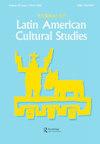Curations of a nepantlera: Forever Betwixt and Between Inés Estrada’s Impatience (2016)
IF 0.3
4区 社会学
Q4 CULTURAL STUDIES
引用次数: 0
Abstract
This article takes as its subject Impatience, a self-published collection of short and medium-length comics made between 2012 and 2016 by Mexican comics artist Inés Estrada. Inspired by the queer curations of Gayatri Gopinath (2018), I develop a curatorial reading of Estrada’s comics in dialogue with the work of Chicana theorist and writer Gloria E. Anzaldúa. I draw especially on Anzaldúa’s take on the Nahuatl concept of nepantla and her theory of the nepantlera, that is, those who offer strategies for tactically navigating the transitional, whether that is via their writing, healing practices, art, and/or activism. My close reading of three comics in the collection, namely “The multiverse is inside of you / You are inside of the multiverse”, “Cenote”, and “Víbora”, examines how Estrada gives form to the epistemological, affective, and embodied materiality conveyed by Anzaldúa’s nepantla. My aim is to situate the account of the human presented by Impatience within a transtemporal genealogy of Latina and women-of-colour feminist and queer thought. In keeping with this, I argue that Estrada’s collection envisions the human body as a material entity that communes with the nonhuman and the environment, and it does so by experimenting with the specificities and formal capacity of the comics medium.策展:永远在间或之间(2016)
本文以墨西哥漫画艺术家因萨梅斯·埃斯特拉达于2012年至2016年自行出版的中短篇漫画作品集《急躁》为主题。受到Gayatri Gopinath(2018)的酷儿策展的启发,我与墨西哥理论家和作家Gloria E. Anzaldúa的作品对话,对埃斯特拉达的漫画进行了策展阅读。我特别引用Anzaldúa对纳瓦尔特人的nepantla概念和她的nepantlera理论的看法,即那些通过写作、治疗实践、艺术和/或行动主义为过渡提供策略的人。我仔细阅读了合集中的三幅漫画,分别是“多重宇宙在你体内/你在多重宇宙中”、“Cenote”和“Víbora”,研究了埃斯特拉达是如何为Anzaldúa的nepantla所传达的认识论、情感和具体物质性赋予形式的。我的目的是将《急躁》中对人类的描述置于拉丁裔、有色人种女性主义者和酷儿思想的跨时代谱系中。为了与此保持一致,我认为埃斯特拉达的收藏将人体想象成一个与非人类和环境交流的物质实体,它通过实验漫画媒介的特殊性和正式能力来实现这一点。
本文章由计算机程序翻译,如有差异,请以英文原文为准。
求助全文
约1分钟内获得全文
求助全文

 求助内容:
求助内容: 应助结果提醒方式:
应助结果提醒方式:


